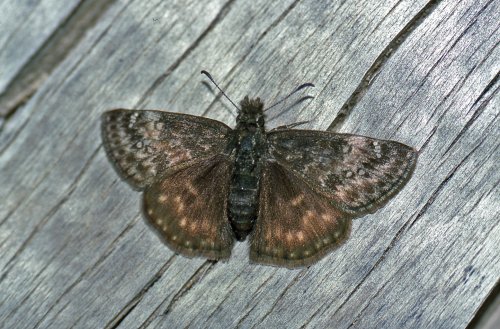
Locally common in a wide variety of habitats from sea level (including the Central Valley) to 7000',but rarely seen on the East slope. Many of its colonies are transient, especially at low elevation where its hosts are often annuals.It often disappears from an area for years on end, then reappears suddenly. It has, however, been a long-term permanent resident at Lang Crossing. This is the only small Dusky-Wing with multiple broods--three at 5000'. This in itself is a valuable aid to identification.
Males are good puddlers and often fly in circles around patches of the host plant. They are avid visitors to Pink Dogbane and Vetch flowers and often visit others. They usually occur in the open, along streamsides, in grassland or rocky balds, but also along roads through mesic mid-elevation forest. There are differences in details of the wing pattern between the spring and later broods. The well-developed light spot on the forewing upperside at the end of the discal cell is a good way to tell this species from E. pacuvius.
The hostplants are all Fabaceae, including both annual and perennial species of the genus Lotus. Spanish Lotus, L. purshianus, is a frequent choice at low elevation. The introduced perennial, Bird's-Foot Trefoil (L. corniculatus) does not seem to be used.
